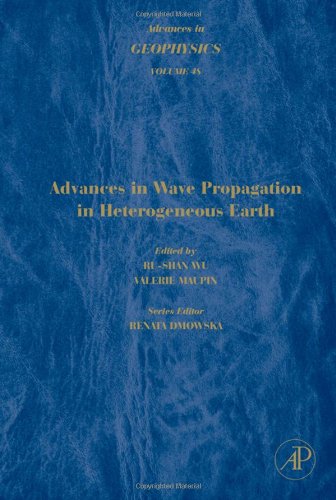

Most ebook files are in PDF format, so you can easily read them using various software such as Foxit Reader or directly on the Google Chrome browser.
Some ebook files are released by publishers in other formats such as .awz, .mobi, .epub, .fb2, etc. You may need to install specific software to read these formats on mobile/PC, such as Calibre.
Please read the tutorial at this link: https://ebookbell.com/faq
We offer FREE conversion to the popular formats you request; however, this may take some time. Therefore, right after payment, please email us, and we will try to provide the service as quickly as possible.
For some exceptional file formats or broken links (if any), please refrain from opening any disputes. Instead, email us first, and we will try to assist within a maximum of 6 hours.
EbookBell Team

4.3
68 reviews 
ISBN 10: 0080466354
ISBN 13: 9780080466354
Author: Ru-Shan Wu, Valerie Maupin
Significant progress in our understanding of the Earth's structure and functioning is dependent on new and original observations. However, these observations cannot be interpreted in a quantitative way without tools to model them, and developing adequate modelling methods is also a prerequisite for progress. Seismological raw data in the 21st century are mostly three-component broadband recordings, and require advanced numerical tools to be modelled, especially if lateral variations in the model are accounted for in addition to the radial stratification of the Earth. Considerable progress has been made concerning modelling of elastic waves in laterally heterogeneous structures in the last decades, taking advantage of the development of computer power. The number of articles related to new developments of diverse methods is enormous and it can be very difficult for newcomers to get an overview of the different methods available, and to be able to find which method is most appropriate for his or her applications. This book aims at giving introductions and basic reviews of the modelling methods for elastic waves in laterally heterogeneous structures which are most commonly used in contemporary seismology, or may have great potential for the future.
Chapter 1 Recent Developments
Chapter 2 Introduction to Mode Coupling Methods for Surface Waves
Chapter 3 Boundary Integral Equations and Boundary Elements Methods in Elastodynamics
Chapter 4 Generation and Propagation of Seismic SH Waves in Multilayered Media with Irregular Interfaces
Chapter 5 Oneway and Onereturn Approximations: De Wolf Approximation for Fast Elastic Wave Modeling in Complex Media
Chapter 6 Simulation of High-Frequency Wave Propagation in Complex Crustal Waveguides Using Generalized Screen Propagators
Chapter 7 Spectral-Element Analysis in Seismology
Chapter 8 The Finite-Difference Time-Domain Method for Modeling of Seismic Wave Propagation
Chapter 9 A Lattice Boltzmann Approach to Acoustic Wave Propagation
Chapter 10 Synthesis of Seismogram Envelopes in Heterogeneous Media
Subject Index
advances in wave propagation in heterogenous earth
advances in geophysics
propagation waves
advances in astronomy
propagation in waves meaning
propagation of a wave across the surface of a pond
Tags: Ru Shan Wu, Valerie Maupin, Advances, Wave Propagation, Heterogenous Earth